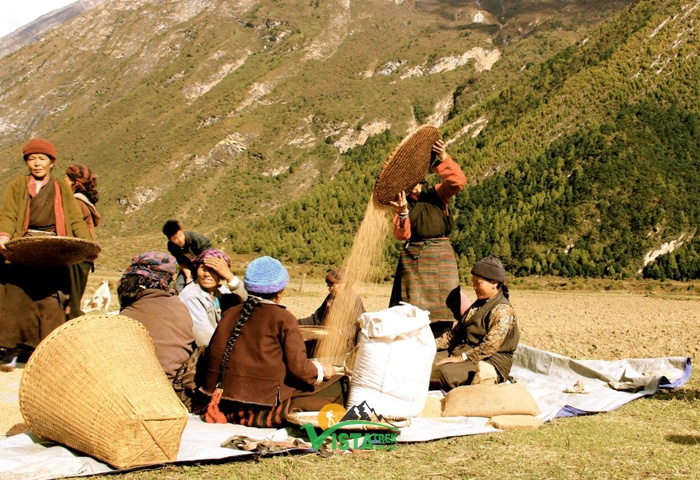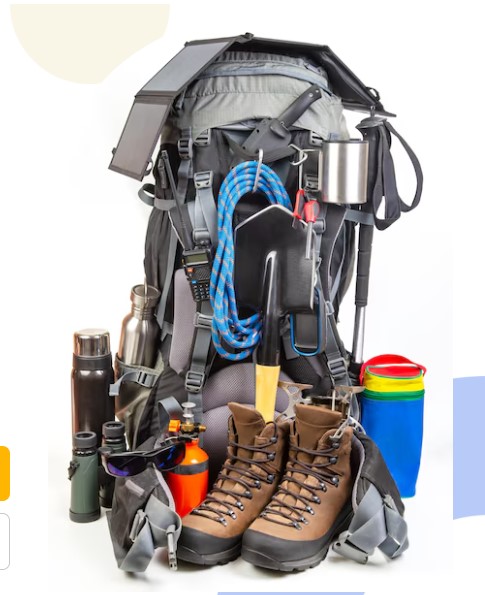The Manaslu Circuit Trek is one of Nepal’s most spectacular yet challenging adventures, circling the world’s eighth-highest mountain (8,163m). Manaslu offers raw Himalayan beauty with fewer trekkers than crowded Everest or Annapurna routes. This blog is all you need for your Manaslu Circuit Trek preparation because reaching Larkya La Pass (5,106m) requires serious preparation. Whether you’re a seasoned trekker or a determined first-timer, this blog will walk you through physical training, essential gear, permits, and mental preparation, which is everything you need to conquer this epic trek confidently. While there is no way of determining the Manaslu trek difficulty level, preparing for the Manaslu trek will never hurt you.
In this guide, I’ll walk you through exactly what you need to know:
The Manaslu Circuit Trek is highly difficult, requiring trekkers to endure multiple long hiking days across diverse terrains. High-altitude trekking adds further challenges, making endurance training for the Manaslu trek essential. The Manaslu Circuit remains Nepal’s last actual “adventure” trek—where you’ll encounter

While physically demanding, Manaslu rewards trekkers with solo trail moments (only 3,000 visitors/year vs. 60,000+ on Annapurna). Unspoiled landscapes like the Budhi Gandaki gorge—Nepal’s “Grand Canyon.” Ancient trade routes are still used by salt caravans from Tibet.
Proper training and planning differentiate between an unforgettable experience and a dangerous struggle. At Vista Treks, we’ve helped thousands prepare successfully according to the Manaslu trek difficulty level—this guide shares our proven method in Manaslu Circuit Trek Preparation. The Numbers Don’t Lie: So you better prepare for Manaslu trek endurance training or trekking fitness plan
“Foreigners often underestimate the descent from Larkya La—it’s 1,600m down on loose scree in 4 hours. I’ve seen more injuries here than on the ascent.”
If you want to complete the Manaslu Circuit Trek, then I recommend you start working out because preparation is key. Start training 3 months before so your body can adapt to long, steep climbs and thin air in the Manaslu circuit trek. Here are some trekking fitness plans for high-altitude treks.
Start Training 3-6 Months Before Your body needs to adapt to long days, steep climbs, and thin air. Here’s how to prepare: Stage-Based Approach for Trekking Fitness Plan for High-Altitude Treks. Do about a 45-minute uphill walk and repeat, and do some strength training like squats, planks, deadlifts, and swimming. Use your trekking boots during training and break them in to avoid blisters on the trail.
Nepali guides recommend chewing salty chia seeds during training to simulate electrolyte loss at altitude. If you do the following Manaslu trek endurance training, then you’ll have no problem completing it.
Proper altitude training for trekking is essential when preparing for the Manaslu Circuit, where you’ll reach 5,106m at Larkya La Pass. Understanding Manaslu trek altitude sickness symptoms and prevention is crucial – headaches, nausea, and dizziness are warning signs to heed. For ideal trekking in Nepal, preparation includes gradual ascent plans, hydration strategies (4+ liters daily), and altitude-adjusted training. Many trekkers find that spending a few nights at 2,500–3,000 meters before starting helps their acclimatization. Remember, the best way to enjoy Nepal’s breathtaking high-altitude trails is to respect the mountain’s pace – slow and steady wins the race to the summit.
Oxygen levels drop 5% further at night. Most trekkers reach their limit on Cumulative Fatigue Day 7. Hydration is key. 5L of water daily is a must; electrolytes help.
On the Manaslu Circuit Trek, where conditions can quickly change from warm valleys to freezing passes, having the right equipment is crucial. For the best gear for the Manaslu trek, prioritize these essentials:
For a sunny hike, wear a Merino T-shirt as your base layer and a light windbreaker as your outer layer. You won’t need a middle layer. In a snowstorm, start with a thermal top and bottom for warmth. Add a down jacket as your middle layer to trap heat, and finish with a Gore-Tex shell as your outer layer to protect against wind and snow.
Many trekkers make this mistake—your street shoe size ≠ trekking boot size. Always:
Proper gear is essential for a successful Manaslu Circuit Trek. Start with sturdy, reliable boots like the Scarpa Mont Blanc or a La Sportiva equivalent for rugged terrain. A 40-50L backpack with a rain cover ensures your gear stays dry, while a sleeping bag rated for -10°C keeps you warm at high altitudes. Adjustable carbon fiber trekking poles provide stability on steep trails, and a headlamp with extra batteries is crucial for power outages. Since clean water is a must, bring purification tablets or a filter to stay safe and reduce plastic waste.

Securing Manaslu trek permits is more complex than many trekkers realize. The Nepalese government strictly controls access to this restricted area, issuing only limited restricted area permits weekly during peak seasons (September-November). These Manaslu trek guided tours often sell out months in advance as they help protect both the fragile ecosystem and local culture. Key Checkpoints for Permit Verification. Your documents will be checked at three critical points:
Since 2023, all trekkers must hire a guide and porter for the Manaslu trek, as independent hiking is prohibited. Reputable operators:
In 2022, 37 trekking groups were denied entry at Jagat because they arrived without confirmed permits. Since the government allocates permits on a first-come, first-served basis, delays can mean missing out entirely. Many independent trekkers assume they can obtain permits last-minute in Kathmandu, only to find quotas already filled.
How authorized Manaslu trek guided tours Operators Secure Permits
Advance Applications: Permits are requested months ahead, especially for peak seasons.
Guide Mandate: Since 2023, trekkers must be accompanied by a licensed guide, and operators must handle all paperwork.
Quota Management: Experienced agencies monitor permit availability and adjust group sizes accordingly.
If you’re planning a September-November trek, book at least 6 months in advance to guarantee your spot. Late planners risk being turned away at the first checkpoint, wasting time and money on a trip that never truly begins.
The Manaslu Circuit Trek reveals its true magic to those who come prepared. While the journey challenges every trekker, those who invest in proper Manaslu Circuit Trek preparation gain something priceless – the freedom to experience rather than just endure. When you train for altitude, pack the right trekking gear checklist for Manaslu, and prepare mentally, you transform from surviving to thriving on the trail.
This is why VistaTek emphasizes preparation – from personalized training plans to gear checks in Kathmandu. The mountains don’t compromise, but with the right approach, you’ll be ready to meet every challenge and cherish every reward. Your Manaslu experience begins long before you take your first step on the trail – it starts with the decision to prepare properly.
Why Wait? Your Himalayan Adventure Awaits!
[Get Started Now] →
“Ready to experience the beauty of Manaslu? Book your trek with Vista Treks now and enjoy a safe, amazing adventure!”
Manaslu Annapurna Double Circuit Trek 22 Days
Manaslu & Tsum Valley Trek 21 Days
Since 2023, the government mandates at least 2 trekkers with a licensed guide. Guides know hidden trails, manage bookings, and handle emergencies. Vista Treks provides experienced guides with wilderness first-aid training.
You should book at least 6 months in advance. Last-minute bookings may face permit shortages.
Yes! Medical clearance, extra acclimatization days, and lightweight gear are recommended. We provide senior-friendly packing lists.
You should bring essential medicines like Diamox, ibuprofen, blister patches, and oral rehydration salts. We also provide a comprehensive first aid kit.
There will be Ncell coverage up to Lho village (Day 4) and no signal beyond Samdo (Day 8). We provide satellite phones.
Guides carry GPS locators, and helicopter rescue is possible within 2-4 hours (weather permitting). Emergency funds are covered upfront.
Rare Himalayan black bears (guides carry deterrents). More common: Dogs in villages (keep distance).
We are the only company with a dedicated altitude medic on staff, customizable itineraries, and a post-trek recovery lounge in Kathmandu.
Always walk clockwise around temples and stupas, avoid pointing your feet at people or altars, and always ask permission before photographing locals. Respecting these customs ensures a positive experience.
The trek typically takes 13–17 days, depending on your pace and whether you include acclimatization days.